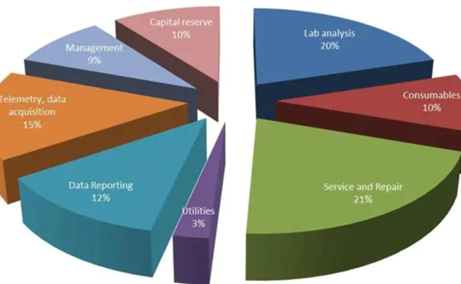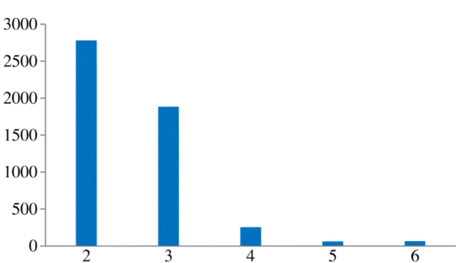Distribution analysis is a statistical method
used to study the distribution of data. It can help people understand the
trend, dispersion and possible outliers of values in a data set. Through the
analysis, people can better understand the characteristics and patterns of the
data, providing a reference basis for subsequent data processing and decision-making.
This article will explain a few important roles of distribution analysis for
your business.
Important Roles
For Enterprises
Optimizing The Supply Chain
By conducting distribution
analysis, businesses can gain a better understanding of the flow and
distribution of products through the supply chain. This can help businesses
determine the optimal supply chain network configuration, including the
location of warehousing and logistics facilities, product distribution
strategies, and inventory management. By optimizing the supply chain, companies
can improve operational efficiency, reduce costs and ensure that products reach
their target markets on time.
Market Positioning And Channel Selection
Distribution analysis can help
companies identify target markets and audience groups, and understand the
characteristics and needs of different markets and channels. By analyzing sales
data, consumer behaviour and market trends, companies can choose the most
suitable distribution channels and sales strategies to meet the needs and
preferences of different markets. This helps companies position their products
and brands more precisely and increase market share.

Sales Forecasting And Inventory Management
By analyzing historical sales
data and market trends, companies can make sales forecasts, predict future
demand and plan production and inventory. This helps companies avoid over- or
under-stocking, improve inventory turnover, and reduce the risk of slow-moving
and out-of-date products. At the same time, accurate sales forecasting can help
companies set reasonable sales targets and performance evaluation metrics to
drive the sales team.

Suppose an electronics
manufacturer is considering selling their products across different retail
channels, including offline brick-and-mortar shops, large supermarket chains,
and online e-commerce platforms. To evaluate the distribution effectiveness of
different channels, they can first collect sales data from each channel,
including metrics such as sales, volume, profit, and return rate. This data can
be obtained through data sharing with each channel partner or by using an
internal sales system. They will then collate and compare this data. In
addition, they can assess the level of market coverage and consumer
satisfaction for each channel. For example, through surveys and feedback
collection, they can understand the performance of different channels in terms
of product availability, shopping experience and after-sales service, and
measure the quality and effectiveness of the channels based on consumer
feedback.
Distribution Effectiveness Evaluation
By analyzing distribution data
and performance indicators, companies can assess the effectiveness of different
channels and sales strategies, and make adjustments and optimizations
accordingly. For example, companies can compare the sales, profitability,
market share and other indicators of different channels, identify better and
worse performing channels, and optimize resource allocation and marketing
strategies to enhance distribution effectiveness and performance.

Strategic Decision Support
Distribution analysis provides
strong support for corporate strategic decision-making. Through an in-depth
understanding of the market and channels, enterprises can better grasp the
market trend, competitive situation and consumer demand, so as to develop and
adjust the corresponding market attack strategy, product positioning and
pricing strategy. The results of the analysis can also provide guidance and
decision-making basis for the company's expansion plan, market expansion and
new product launch.
Summary
Overall, distribution analysis is
crucial for businesses. It can help companies optimize their supply chain,
determine market positioning and channel selection, conduct sales forecasting
and inventory management, evaluate distribution effectiveness, and provide
support for strategic decision-making. Through effective distribution analysis,
companies can improve operational efficiency, enhance market competitiveness,
and achieve sustainable business growth.
